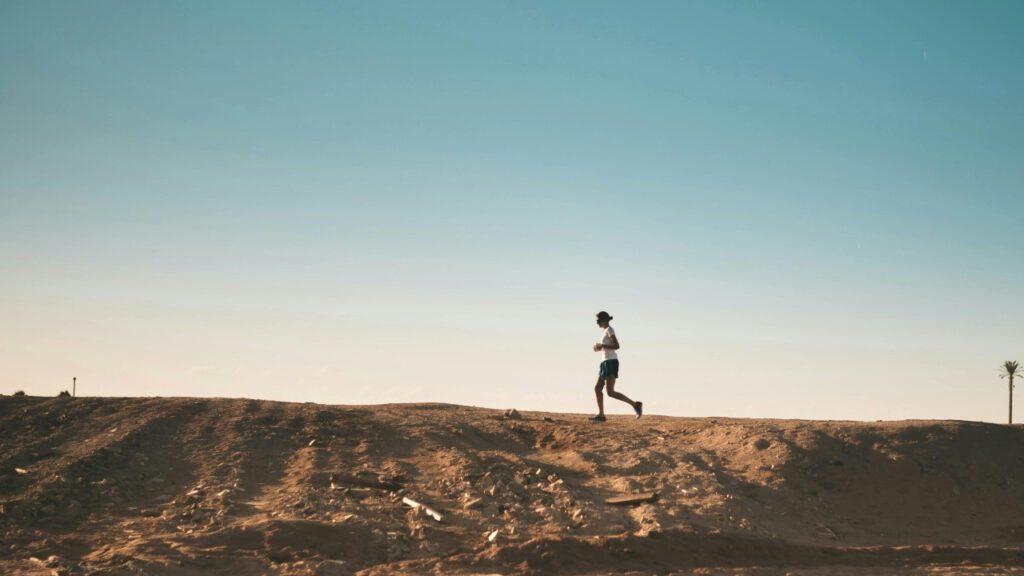As trail and ultra runners prepare for the demands of mountain races, the summer months pose unique challenges, particularly regarding sun exposure. While training outdoors under the long daylight hours can be invigorating, the associated risks of UV radiation cannot be overstated. Recent research highlights that outdoor athletes often do not protect themselves against the sun as adequately as they should. A 2023 literature review noted a disconcertingly high rate of sunburn among athletes despite their understanding of the risks associated with prolonged UV exposure. This statistic is not just alarming; it’s a call to action for serious runners who aspire to optimize their performance without compromising their health.
For experienced athletes, the risks of developing skin cancer and other sun-related ailments should factor significantly into training and race day strategies. The common knowledge that sunscreen is crucial does not always translate into effective application. Surveys reveal that a substantial percentage of runners fail to practice proper sun protection techniques, with many forgetting or feeling uncomfortable applying sunscreen altogether. In addition to regular application, the effectiveness of sunscreen can diminish due to sweating, which is often exacerbated during intense runs or races. Therefore, athletes need to invest in sweat-resistant and water-resistant sunscreens designed specifically for high-output activities, as these products can adhere longer during rigorous training sessions.
Altitude training, while beneficial for enhancing aerobic capacity and boosting red blood cell production, brings increased UV exposure that seasoned runners must consider. As altitude increases, UV radiation becomes more potent due to the thinning atmosphere, with exposure rates rising about 4 to 5 percent for every 1,000 feet. This physiological response underscores the importance of not only monitoring training altitude but also adjusting sun protection measures accordingly. Proper UV management becomes especially crucial when planning for mountainous races, where the elevation gain can translate into an uncomfortable and potentially dangerous oversight if adequate precautions are not taken.
Despite the understanding that clouds can also allow a substantial amount of UV rays to penetrate, runners often underestimate their exposure during overcast conditions. In fact, over 90 percent of UV rays can still reach the skin on cloudy days. Thus, a proactive approach is essential, beginning with a thorough check of the UV index before heading out for a training run or race. Given that many races take place in varying terrains and altitudes, tailoring sun protection strategies to the specific conditions of the race environment can be a vital aspect of race-day preparation.
For those immersed in preparing for significant events like UTMB or other ultramarathons, strategic planning extends beyond sun protection products. Training schedules can benefit from being aligned with the peak UV radiation hours, which tend to fall between 11 a.m. and 3 p.m. This considerably minimizes exposure during the most intense sunlight. While acclimating to heat and sunlight is part of the training process, it’s worthwhile to consider indoor sessions when preparing for these conditions, allowing athletes to strike a balance between adaptation and safety.
Moreover, gear choices can play a substantial role in mitigating risks associated with sun exposure. Selecting running tops that offer UPF protection or incorporating caps into the outfit can significantly reduce areas susceptible to sunburn. Lightweight, moisture-wicking fabrics can help runners maintain comfort while being protective. Attending to these details can not only optimize performance but also foster a culture of health-consciousness within the sport.
As athletes gear up for their upcoming races, recognizing that sun protection is an ongoing challenge enhances long-term performance sustainability. This awareness permits focused preparation that includes both tactical decision-making and critical assessments of personal habits related to skin care during training and competition. The takeaway for all mountain runners is clear: while endurance and speed may dominate race strategies, safeguarding one’s skin from UV exposure is paramount for longevity in the sport. Prioritizing effective sun protection practices will enable runners to enjoy their training experiences without the looming threat of long-term damage or health repercussions.
